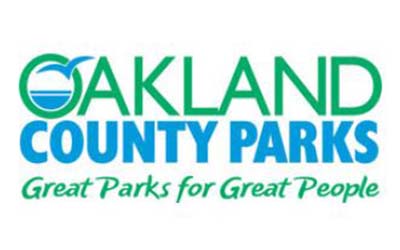Remembering our fallen conservation officers
Editor’s note: In celebration of the department’s centennial anniversary, the Showcasing the DNR feature series will highlight one story each month during 2021 that recalls or pays tribute to various accomplishments of the department over the past century.
By KATIE GERVASI
Michigan Department of Natural Resources
The Gospel of Matthew, chapter 5, verse 9 reads, “Blessed are the peacemakers, for they will be called children of God.”
The Michigan Conservation Officers Association uses this Bible verse to represent the state’s 16 conservation officers killed in the line of duty. They swore an oath to “preserve, protect and defend the honor and tradition of the (Michigan Department of Natural Resources) Law Enforcement Division.”
 Taken too soon, these loyal and dedicated officers made the ultimate sacrifice, which continues to be remembered through their family generations. Taken too soon, these loyal and dedicated officers made the ultimate sacrifice, which continues to be remembered through their family generations.
“Unfortunately, line-of-duty deaths in law enforcement have become an increasingly frequent occurrence,” said MCOA president Kyle Bucholtz, who patrols Huron County. “It is critically important we do not become accustomed to the idea of losing officers or forget the fallen officers of our past.”
Each year, during National Police Week, active Michigan conservation officers salute and place a state of Michigan flag at each gravesite to honor the fallen. |
 In 1962, President John F. Kennedy signed a bill into law that states May 15 be recognized nationally as Peace Officers Memorial Day, and the calendar week be observed as National Police Week. In 1962, President John F. Kennedy signed a bill into law that states May 15 be recognized nationally as Peace Officers Memorial Day, and the calendar week be observed as National Police Week.
Eleven of Michigan’s fallen conservation officers are honored at the National Law Enforcement Memorial in Washington D.C. – where (prior to COVID-19) up to 40,000 people would attend the May services to honor fallen heroes.
This year, the DNR Law Enforcement Division was informed by the Officer Down Memorial Page of two recently discovered fallen Michigan conservation officers now undergoing the process of being recognized at the memorial.
Investigators Elgin McDonough, 38, from Algonac, and Karl Zimmerman, 35, of Marine City were killed immediately in a 1932 automobile accident near Webberville, while traveling from Lansing to Macomb County.
The two men died when their vehicle struck an unlit farm wagon that was hauling wood. Zimmerman had only been on the job for three days. |
 Of Michigan’s 16 conservation officers killed in the line of duty, Lt. Arthur Green III, a U.S. Air Force and Michigan Air National Guard veteran, is the most recently deceased. Of Michigan’s 16 conservation officers killed in the line of duty, Lt. Arthur Green III, a U.S. Air Force and Michigan Air National Guard veteran, is the most recently deceased.
Green died Aug. 9, 2015, when the aircraft he was piloting crashed while he was on his way to a mandatory training in northwest Michigan.
“I just had a bad feeling that morning that something wasn’t going to be right,” Karla Cole, Green’s widow, said. “I had been at work for about an hour when the trooper arrived. My heart sank.”
Green is remembered for his commitment to Belle Isle and his hometown, Detroit. He worked as Detroit police officer before becoming a conservation officer in 1996.
“He was very familiar with Detroit and downtown and worked hard to bring Belle Isle back to what it should be – a family place,” Cole said. “We would pack the kids in the car when they were little and drive them around the island just to ride around and see the deer.”
Green is survived by his two sons, Antonio and Brice, and five grandchildren, two of whom were born after his death. Cole said Green instilled his love for fishing into his children, which has been passed on, particularly to one of her grandsons. |
 “We started going back to our family cottage last year. My 8-year-old grandson especially enjoys fishing,” Cole said. “He pulled a fish out of the lake, and he ran around, he was so scared to touch it. But he’s quite the fisherman now. “We started going back to our family cottage last year. My 8-year-old grandson especially enjoys fishing,” Cole said. “He pulled a fish out of the lake, and he ran around, he was so scared to touch it. But he’s quite the fisherman now.
“My husband would have liked that, he really taught my boys about fishing, he took them on the lake a lot at the cottage. He would get a big kick out of seeing my grandson with a pole in his hand.”
Conservation officers stay connected with family members of the fallen.
Preceding Green’s death, Vernon Scott Averill died in 1986 from brain tumors sustained after two poachers beat Averill in the head after he issued them tickets for spearing fish along the Acme Creek, near Traverse City, in 1980.
“It makes my son (Randy Averill) and I proud to see that people remember him (Averill) and that we’re still treated as family by the DNR,” said Susan Ewing, Averill’s widow. “It’s important to honor the job that conservation officers and law enforcement officers do in society. He (Vernon) realized a lifelong dream when he became a conservation officer and loved all aspects. He worked hard, a lot of hours and always treated everyone with respect.”
Ewing and Randy still reside in northwest Michigan. |
 Family roots of fallen Conservation Officer Gerald Welling remain within the DNR. Family roots of fallen Conservation Officer Gerald Welling remain within the DNR.
Welling was killed at the age of 54 on Sept. 10, 1972, the night before celebrating his 24th wedding anniversary, and before his granddaughter, Stacy (Welling) Haughey, Michigan DNR Upper Peninsula field deputy, was born.
“In many ways my grandpa has been a part of my life,” Haughey said. “I feel his courage and spirit in my heart, and I am lucky because all my life I have had a hero watching me from heaven and guiding my journey.”
Haughey oversees DNR operations in the Upper Peninsula. Her grandfather was killed while patrolling for illegal bear hunters near Hermansville, located in the Upper Peninsula’s Menominee County. He was intentionally struck and dragged by a vehicle while conducting a shining check with his partner.
“I’m sure these words and thoughts about my grandfather echo the memories and emotions that are experienced by those who have known a fallen officer,” Haughey said. “The impact of loss is a powerful thing that cannot be fully realized until it happens to you.
“The loss of our friends and protectors proves the dangers that exist in our society and proves the need to have peace officers at our doorstep – we need them whether it is in the middle of night, Christmas day, or a perfect Sunday afternoon – they are there to protect us in times we are most vulnerable.”
Welling was laid to rest at a cemetery in the Upper Peninsula. He was later relocated downstate when his wife moved back to her hometown of Coe. |
 Tom Mellon Jr., of Belmont, was 6 years old when his father, Tom Mellon, died while responding to a forest fire in the Upper Peninsula’s Schoolcraft County. Mellon drowned while ferrying fire equipment across the Manistique River in 1947. Tom Mellon Jr., of Belmont, was 6 years old when his father, Tom Mellon, died while responding to a forest fire in the Upper Peninsula’s Schoolcraft County. Mellon drowned while ferrying fire equipment across the Manistique River in 1947.
Conservation officers often provide on-the-ground assistance during wildfires.
“He took me on a few missions,” Mellon Jr. said of his father. “He particularly liked the woods, trees and plants. He knew all the various tree species, which he taught me. He was an influence for why I became an outdoorsman. I liked small game: rabbits, grouse, peasant hunting.”
Mellon Jr. has six children and passed down his love of hunting to his one son and encourages others to enjoy the great outdoors.
“By all means get out there,” he said.
Bucholtz offered a suggestion on remembering Michigan’s 16 brave, dedicated and fallen conservation officers.
“Please take a moment to genuinely reflect on what each of these fallen conservation officers gave in service to the people of the state of Michigan,” he said. “In the truest sense of the word, each of these fallen officers and the loved ones they leave behind are heroes.”
Read more about each of Michigan’s fallen Conservation Officers at Michigan.gov/ConservationOfficers. |
Check out previous Showcasing the DNR stories in our archive at Michigan.gov/DNRStories. To subscribe to upcoming Showcasing articles, sign up for free email delivery at Michigan.gov/DNR.
/Note to editors: Contact: John Pepin, Showcasing the DNR series editor, 906-226-1352. Accompanying photos and a text-only version of this story are available below for download. Caption information follows. Credit Michigan Department of Natural Resources, unless otherwise noted.
Text-only version – Fallen Officers
Averill: Fallen Conservation Officer Vernon Scott Averill stands proudly with his son, Randy, age 2, after graduating from his conservation officer training in 1976.
Ceremony: A peace officers memorial ceremony at Northern Michigan University in Marquette in May 2016 is one of numerous events across the country aimed at remembering the sacrifices of fallen law enforcement officers.
Green: Lt. Arthur Green III of Detroit is Michigan’s most recently fallen conservation officer. He served the DNR from 1996-2015.
Mellon: Michigan Conservation Officer Tom Mellon drowned while ferrying fire equipment across the Manistique River in 1947.
Rose: A Michigan conservation officer hands a rose to Vera Welling, the widow of Gerald Welling, at a fallen officer memorial ceremony in Roscommon County in 2012. Ms. Welling has since died. (Houghton Lake Resorter photo)
Salute: Two conservation officers salute fallen officer Gerald Welling during a gravesite ceremony.
Welling family: Members of the family of Michigan Conservation Officer Gerald Welling are pictured in 2011. From left, front row: Kaylee Bell Long (granddaughter), Elle Long (great-granddaughter), Vera Welling (wife-deceased). Middle row: Meredith Welling (daughter), Stacy Welling Haughey (granddaughter), Ally Bell Terrell (granddaughter), Marilyn Bell (daughter). Back row: Aaron Bell (granddaughter), Leonard Welling (son)./ |











 Stay informed, stay safe: Mask up Michigan, DNR COVID-19 response
Stay informed, stay safe: Mask up Michigan, DNR COVID-19 response